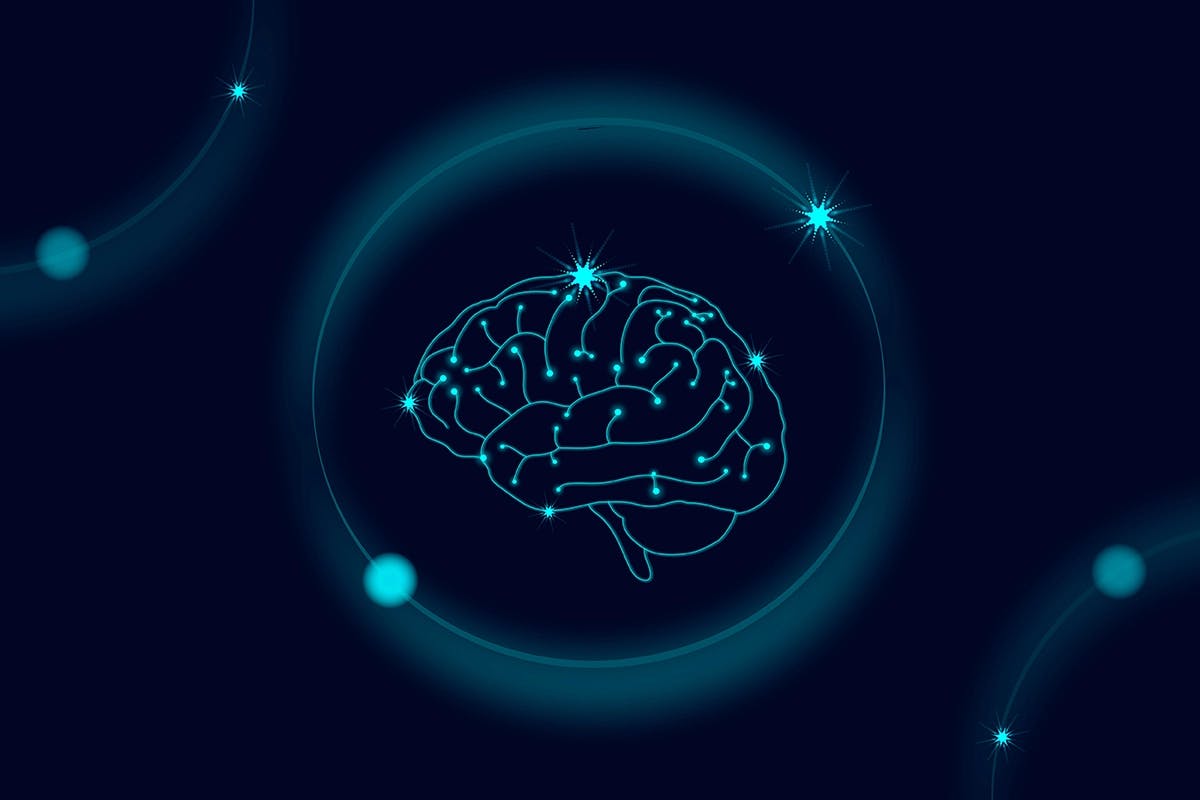Ever feel like technology's moving at light speed and you're just trying to keep up? Well, 'neural networks' are at the forefront of this tech sprint, especially in the machine learning (ML) scene. This article isn’t just another deep dive into tech-speak. Think of it more as your personal guide to understanding how neural networks are shaking things up in AI and ML.
So, neural networks – they're kind of a big deal, right? Imagine a system, kind of like our brains, but in computer form. It’s wading through heaps of data, spotting patterns, and making decisions with barely any help from us humans. That’s the cool thing about neural networks.
This article isn't just for the tech wizards, though. Whether AI is your thing or you're just curious about what all the fuss is about, I've got you covered. We're going to look at how these networks munch on data, learn from it, and get smarter, and trust me, it's as cool as it sounds.
Neural networks aren't just some highbrow concepts. They're changing the game in real life, from how businesses talk to us to making breakthroughs in healthcare. They form the hidden ingredient that powers much of today's most intelligent technology.
We're going on a bit of an adventure here, exploring all sorts of neural networks, what they do, and how they're solving some tricky problems. This isn’t just about getting the lowdown on neural networks; it’s about seeing them in action, in the real world.
Prepared to dive into the complexities of neural networks? We're going to check out how these digital brains are changing the way machines learn and make decisions. It's all about understanding how crucial they are in coming up with top-notch ML strategies. Let’s get started and unravel these digital wonders together!
What is Neural Networks?
Neural Networks, those powerhouses at the heart of today's AI and Machine Learning, are like our brain's high-tech twins. They're built with layers upon layers of artificial neurons, or let's call them 'nodes', each one interconnected. Picture each neuron as a tiny data processor, working together to give these networks their smarts – the ability to learn, adapt, and make decisions.
Think of it as deep learning's secret sauce. Data doesn't just zip through these networks; it goes on a journey, layer by layer. Each layer digs a bit deeper, analyzing and reanalyzing the information. Getting to grips with Neural Networks means understanding this layered dance and how they evolve with each piece of data they encounter.
But why does this matter? Because these networks are the backbone of some seriously smart AI models. They're wizards at recognizing patterns, interpreting heaps of data, and even predicting what's coming next. As we wade further into AI's waters, Neural Networks stand tall, showcasing just how far we've come in our quest to craft machines that don't just compute, but actually learn.
Types of Neural Networks
Neural Networks are diverse and multifaceted, each with its unique architecture and utility. Let's delve into the types of neural networks and understand their functionalities and applications:
1. Convolutional Neural Networks (CNN)
- Structure
CNNs are built with layers that automatically and adaptively learn spatial hierarchies from input data. Each layer in a CNN transforms the input volume to a higher level of abstraction. - Applications
These networks are primarily used in image recognition, video analysis, and medical image analysis. They excel in processing data with grid-like structures.
2. Recurrent Neural Networks (RNN)
- Structure
RNNs are designed to recognize patterns in sequences of data, such as text, genomes, or handwriting. These systems possess internal loops which enable the retention of information. - Applications
RNNs are used in language modeling, speech recognition, and translation applications, making them crucial in natural language processing (NLP).
3. Feedforward Neural Networks
- Structure
These are the simplest types of artificial neural networks where the connection between the nodes does not form a cycle. - Applications
Feedforward networks are used for pattern recognition and classification, and as a basis for deep learning networks.
4. Deep Neural Networks
- Structure
Characterized by their depth, these networks consist of multiple hidden layers between inputs and outputs, enabling the modeling of complex data. - Applications
From image and speech recognition to natural language processing, deep networks have wide applications in advanced analytics.
Applications of Various Neural Networks
- CNNs have revolutionized image analysis, being used in face recognition, medical image analysis, and even in self-driving cars.
- RNNs have transformed text and speech-related applications, enabling advancements in language translation services, text-to-speech applications, and chatbots.
- Deep Neural Networks are at the forefront of AI research, powering complex applications in various fields such as finance for predictive analysis, healthcare for diagnostics, and in e-commerce for personalized customer experiences.
Comparative Analysis
- Performance
The performance of these networks varies based on the task. For instance, CNNs are more suitable for tasks involving images, while RNNs are better for sequential data like text. - Training Requirements
CNNs require a large amount of labeled data for image processing, whereas RNNs need sequential data for effective training. - Computational Resources
The computational power required for these networks depends on their complexity. Deep Neural Networks, for instance, require significant computing power for training and inference.
Advanced Types
- Variants of CNNs and RNNs
There are various advanced types like Long Short-Term Memory (LSTM) networks (a type of RNN), and Residual Networks (ResNets, a variant of CNN), which have specific applications and advantages. - Hybrid Models
In some cases, a combination of different neural network types is used to leverage the strengths of each, such as using CNNs for feature extraction followed by RNNs for sequence analysis in video classification.
Future Directions
- Research Trends
Ongoing research is exploring more efficient and less resource-intensive neural networks. This includes work on capsule networks (a variant of CNNs) and attention mechanisms in RNNs. - Application Expansion
Exploring new domains such as quantum computing, enhancing existing applications, and creating new possibilities.
Neural Networks in Machine Learning Strategies
Merging neural networks with machine learning strategies? That's been a total unique across all sorts of fields. These networks, with their superpower to make sense of complex data, are now the MVPs in crafting top-notch machine learning game plans. Let’s take a dive into the different arenas where they’re making some serious waves.
Predictive Analytics
- Data Interpretation
Neural networks are like super sleuths in a sea of data. They spot patterns and oddities that might slip past old-school analysis. - Forecasting
In finance, weather, market trends - you name it - they're the go-to for peering into the future, thanks to their knack for learning from the past. - Real-World Applications
From predicting stock shifts to what consumers might buy next, neural networks are upping the game in predictive analytics.
Pattern Recognition
- Feature Detection
Whether picking a face out of a crowd or sniffing out fraud, neural networks are ace at pattern recognition. - Automating Recognition Tasks
They learn from examples, making them perfect for automating tasks without super-specific instructions. - Use Cases
In healthcare, they're doing wonders, like spotting disease signs in medical images.
Natural Language Processing (NLP)
- Language Understanding
Thanks to neural networks, machines are getting a real grip on human language. - Speech Recognition and Translation
They're at the heart of speech recognition, language translation, and even mimicking human writing. - Impact on Communication
This tech is making machines way more chatty and user-friendly, bridging communication gaps big time.
Image Processing
- Visual Data Analysis
CNNs have turned image processing on its head, letting machines understand pictures like never before. - Application in Various Fields
From spotting health issues in medical scans to quality control in factories, their role in image processing is huge and growing.
Neural Networks in AI Solutions
- Versatility
Their adaptability makes them a cornerstone in a ton of AI solutions. - Enhancing AI Capabilities
They're pushing AI to be smarter and more efficient.
Machine Learning Applications
- Broad Spectrum of Uses
Neural networks are everywhere in machine learning, handling everything from sorting data to steering self-driving cars. - Continuous Learning and Adaptation
They keep getting better, making ML systems smarter over time.
Advanced Data Analysis
- Handling Complex Data
They tackle messy, complicated data with ease. - Insight Extraction
Turning huge datasets into gold mines of insights? That's their jam.
Neural Networks in NLP and Image Recognition
- Enhancing Language and Image Understanding
They've seriously upped the game in how machines get language and visuals - Evolution of Technologies
They're driving some major leaps forward in both NLP and image recognition.
Business and Industry Impact
- Operational Efficiency
They're streamlining stuff across industries, making things faster and smarter. - Customer Experience
Personalized recommendations, and better customer service - neural networks are making it happen.
Ethical and Societal Considerations
- Responsible Use
Comes the need to use neural networks responsibly, thinking about privacy, bias, and jobs. - Societal Impact
They're changing the world, so we've got to balance tech progress with ethical smarts.
Future Prospects
- Continuous Evolution
The field's always evolving, getting more efficient and user-friendly. - Expanding Horizons
Expect to see them in more places, playing nice with other AI tech, and solving even trickier real-world problems.
Advantages of Using Neural Networks in Machine Learning
Tossing neural networks into the machine learning mix has been like adding rocket fuel. Here's what these brainy models bring to the party:
- Enhanced Data Processing Efficiency
They're pros at handling heaps of data, be it messy images or tricky text. Think of them as data whizzes, crunching numbers at lightning speed and dealing with multiple things at once. - Advanced Pattern Recognition
Subtle, sneaky patterns that hide in your data? Neural networks spot them like a hawk. Whether it's figuring out what's up with your health or making sense of market trends, they're on it. - Predictive Modeling
These networks are like fortune-tellers but for data. They learn from what happened before, keep getting smarter, and make predictions that hit the bullseye. Banks and insurance companies love this stuff for risk assessments. - AI Accuracy
Say goodbye to silly AI mistakes. Neural networks are like a fine-tuned orchestra, keeping errors low and nailing complex problems, even when data gets wild and woolly. - Scalability and Flexibility
More data? No sweat. Neural networks scale up smoothly, making them perfect for projects that just keep growing. They’re like chameleons, adapting to whatever challenge you throw their way. - Innovation Enabler
From sparking new ideas to nailing predictions, neural networks are at the forefront of cutting-edge discoveries and methods across industries. - Efficiency in Real-time Processing
Need decisions on the fly? Neural networks have got your back. They're crucial in things like self-driving cars and instant monitoring systems, focusing on what matters and cutting out the fluff. - Deep Learning Integration
These networks aren’t just part of deep learning; they're the heart of it. With their layers and layers of smarts, they make sense of complex data in ways that were once just a dream. - Predictive Power and Accuracy
Generalizing from what they’ve learned to new, unseen stuff? Neural networks do it like a boss. They get the twists and turns in data that others miss, and with tricks up their sleeve like dropout, they stay sharp and ready for new challenges.
Conclusion
When neural networks started shaking hands with machine learning, it was like lightning hit the AI world. Getting your head around these complex systems isn't just about keeping up with tech trends; it's like grabbing the keys to a super-efficient, productivity-loaded engine. The thing with neural networks is, they’re champs at dealing with massive, complicated datasets – something you just can't ignore in today’s machine-learning game. It’s crystal clear why keeping up with these advancements is a big deal. Whether you’re running a business or deep into tech stuff, tapping into neural networks is like tapping into a goldmine.
Codiste company a leader in Machine Learning consulting services, transforms businesses through AI-driven solutions. Our expert team specializes in custom machine learning strategies, ensuring clients stay ahead in a competitive market. Partner with Codiste for innovative, efficient, and tailored AI solutions that drive growth and operational excellence.






